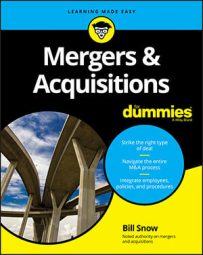The due diligence portion of the M&A process provides enough information for the Buyer to be able to close the deal. This often includes mind-numbingly boring details. Yet this information is necessary for the deal to take place.
M&A due diligence: Operations information
A company’s operations are highly important. That should go without saying. But what does “operations” mean, and more specifically, how does a Buyer conduct due diligence on operations?
In a typical due diligence process, most Buyers seek the following information for evaluating operations:
Listing of all existing products or services, all products or services under development, any major operations discontinued or expected to be discontinued, and copies of all complaints and warranty claims
Correspondence related to any product or services regulatory approval (or disapproval)
Detail on any rebate programs or other special deals with customers (discounts, terms, and so on)
Contracts or agreements with customers, whether formal or informal
Customer quality awards, plant qualification/certification distinctions, quality certifications, or other awards or certificates
Listing of all business application software, vendor and version, number of licenses, and approximate acquisition date
In addition to reviewing a slew of operations-oriented documents, Buyers often want to see Seller’s facility, especially if Seller is a manufacturing or distribution company — in other words, a business with inventory and/or involved with fabrication.
M&A due diligence: Financials
No one should be surprised to hear that financial information is the cornerstone of M&A deals. As you can probably guess, Buyers conduct a thorough review of Seller’s financial information. In all likelihood, the financial review will be the most intensive and important of the due diligence process.
Buyers also want to analyze Seller’s accounting policies for various procedures, including, but not limited to, capitalizing assets, depreciation and amortization methods, and adjustments to EBITDA (earnings before interest, taxes, depreciation, and amortization), as well as reviewing any changes in accounting methods.
The following list is an abridged list of typical financial due diligence, but it gives you an idea of the amount of data typically required to close a deal.
The usual trio of financial statements (income statement, balance sheet, and cash flow statement), preferably prepared by an outside accountant
Accounts receivable and accounts payable information, including aging schedules and details on bad accounts
The general ledger
Projections, capital budgets, and business/strategic plans
Listing of all bank accounts and safety deposit boxes, including authorized signatories
Schedule of prepaid expenses with backup documentation and accumulated amortization
Schedule of deferred income at most recent year-end and month-end
Schedule of security deposits at most recent year-end and month-end
Schedule of all indebtedness and contingent liabilities
Detail of accrued expenses as of the most recent year-end and month-end
Detail of any customer advances, deposits, and credit balances as of the most recent year-end and month-end
Accrued vacation is often the one lurking problem Sellers don’t think about. If employees are due vacation time but haven’t yet taken that time prior to the closing, Buyer will demand a reduction in the purchase price equal to the value of that vacation time.

